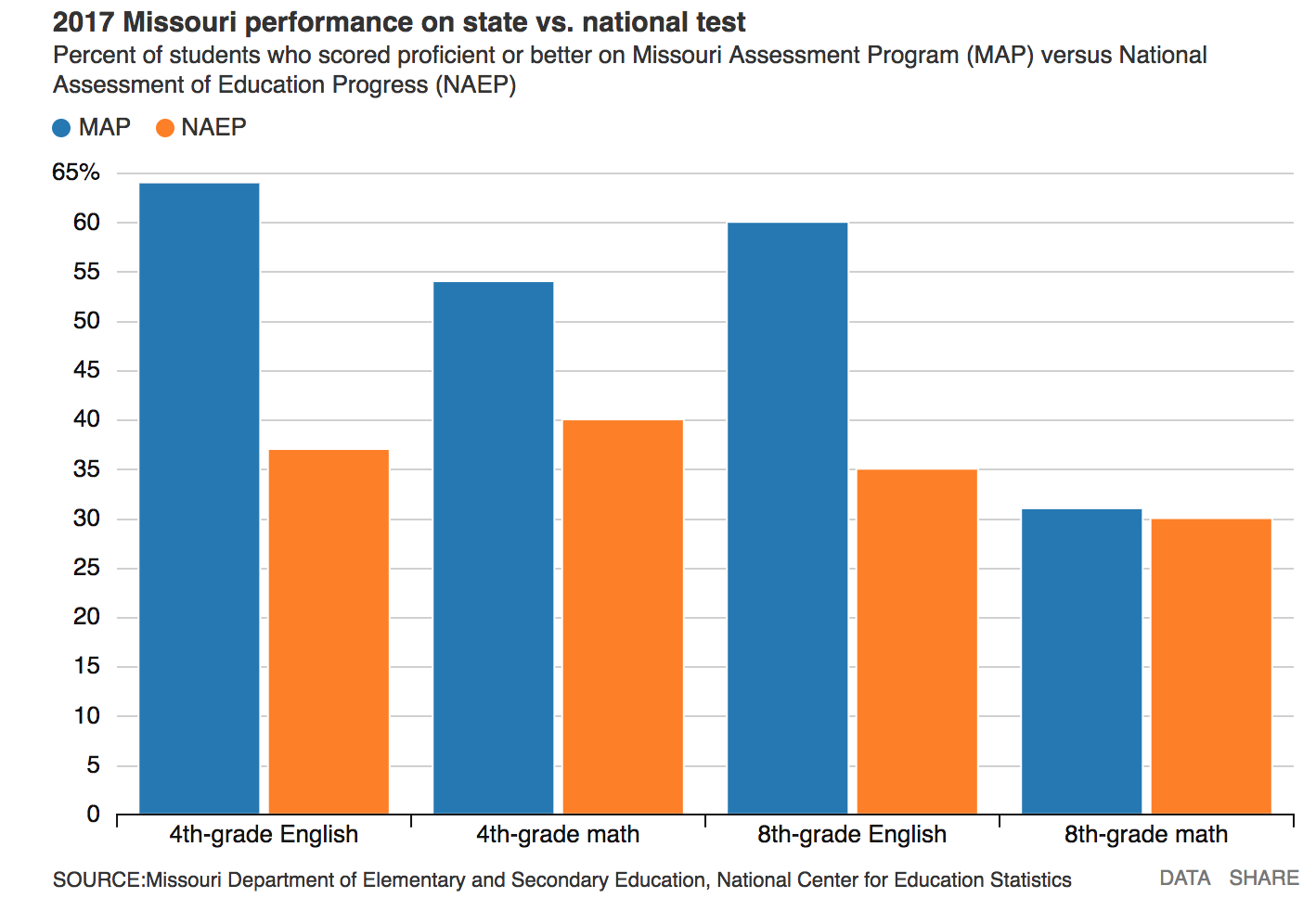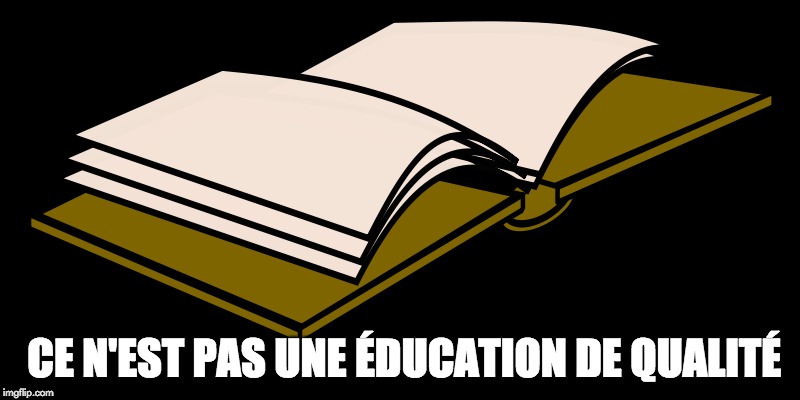Time for a reality check
Missouri has the 10th best graduation rate in the country.
Over 98 percent of traditional school districts have full accreditation in Missouri.
And, around 60 percent of elementary and middle school students are proficient in reading with between30 and 50 percent proficient in math.
On the surface, these numbers look pretty good, if not great, when examining the quality of education in Missouri.
But two recent reports which compare student success in Missouri to other states across the country have called the validity of our internal state statistics into question.
The most recent is the biannual National Assessment of Educational Progress (NAEP) which provides a standardized assessment of student achievement across every state in the country by administering the same test (capturing data for reading and math in fourth and eighth grade) in a statistically significant number of schools in every state in the country.
The initial results for Missouri were, if not encouraging, not too horrible. The state’s scores on this test across the two categories and grade levels were about on par with the national average.
 Things get more troubling, however, when you examine how many students scored proficient or advanced on the NAEP test compared to the percentages scoring proficient or advanced on Missouri’s own MAP tests.
Things get more troubling, however, when you examine how many students scored proficient or advanced on the NAEP test compared to the percentages scoring proficient or advanced on Missouri’s own MAP tests.
According to an analysis by the St. Louis Post-Dispatch, there are considerable disparities between the scores, with as wide a gap as 27 percentage points.
The reality is that while the Department of Elementary and Secondary Education tells parents that over 60 percent of fourth and eighth-grade students are proficient readers, only about 35 percent are actually proficient when compared to students in other states.
“We set the bar at different levels,” DESE’s NAEP Coordinator Jeremy Ellis told the Post-Dispatch, noting that Missouri’s tests more accurately reflect the current “reality” of Missouri classrooms. “Missouri’s could be considered to be set a little lower.”
 NAEP only focuses on fourth and eighth-grade achievement levels, but a recent report from the College Board gives some insight into how Missouri students compare to their peers by looking at Advanced Placement scores across the country.
NAEP only focuses on fourth and eighth-grade achievement levels, but a recent report from the College Board gives some insight into how Missouri students compare to their peers by looking at Advanced Placement scores across the country.
Missouri has the seventh lowest rate in the nation of students graduating in 2017 scoring a three or higher on at least one AP exam.
According to the report, only 12.2 percent of the class of 2017 scored high enough on an AP exam to qualify for college credit. Missouri’s percentage is well below the national average of 22.8 percent and frighteningly far below top scoring Massachusetts which had 32.1 percent of last year’s graduates scoring a three or higher.
Part of the problem is that only 333 of the state’s 560 public high schools offered any AP course in 2017, severely limiting student access to courses that have proven to increase college attendance and success.
Both the NAEP and AP results show major gaps in success and access across racial lines.
In 2017 black students had an average NAEP score that was 27 points lower than white students in fourth-grade reading, 20 points lower than white students in eighth-grade reading, 29 points lower than white students in fourth-grade math, and 30 points lower than white students in eighth-grade math. None of the 2017 scores were statistically different than the gaps that existed in 2000, close to two decades ago.
There are similar gaps in scores and access to AP exams, according to a February story in the St. Louis Post-Dispatch.
According to that article, only 25.5 percent of black students who took an AP exam scored three or higher, compared to a statewide average of 63.9 percent and only 3,284 black students took AP exams, compared to 31,970 white students who took AP exams.
« Previous Post: Playing the numbers game
» Next Post: It is all about finding the right fit
